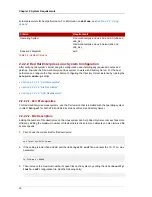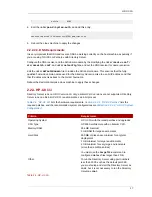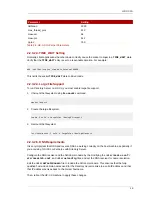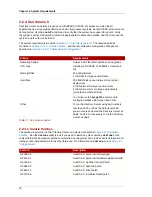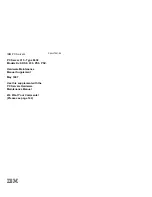
About the setup-ds-admin.pl Script
5
within an organization want individual control of their servers while system administrators require
centralized control of all servers.
When setting up the administration domain, consider the following:
• Each administration domain must have an administration domain owner with complete access to all
the domain servers but no access to the servers in other administration domains. The administration
domain owner may grant individual users administrative access on a server-by-server basis within
the domain.
• All servers must share the same configuration directory. The Configuration Directory Administrator
has complete access to all installed Directory Servers, regardless of the domain.
• Servers on two different domains can use different user directories for authentication and user
management.
1.3. About the setup-ds-admin.pl Script
The Directory Server and Administration Server instances are created and configured through a script
call
setup-ds-admin.pl
. Running this script launches an interactive setup program with a series of
dialog screens with a yes/no prompt or a simple text input prompt. Each prompt has a default answer
in square brackets, such as the following:
Would you like to continue with setup? [yes]:
• Pressing
Enter
accepts the default answer and proceeds to the next dialog screen. Yes/No
prompts accept
y
for
Yes
and
n
for
No
.
• To go back to a previous dialog screen, type
Control-B
and press
Enter
. You can backtrack all
the way to the first screen.
• Two prompts ask for a password. After entering it the first time, confirm the password by typing it
in again. The password prompts do not echo the characters entered, so make sure to type them
correctly.
• When the
setup-ds-admin.pl
finishes, it generates a log file in the
/tmp
directory called
setup
XXXXXX
.log
where
XXXXXX
is a series of random characters. This log file contains all of
the prompts and answers supplied to those prompts, except for passwords.
• Some options, such as
s
(silent) and
f
(file) allow you to supply values for the setup program
through a file. The
.inf
file (described in more detail in
Section 6.3, “Silent Setup”
) has three
sections for each of the major components of Directory Server:
General
(host server),
slapd
(LDAP server), and
admin
(Administration Server). The parameters used in the
.inf
can be
passed directly in the command line. Command-line arguments with
setup-ds-admin.pl
specify
the
.inf
setup file section (
General
,
slapd
, or
admin
), parameter, and value in the following
form:
section.parameter=value
For example, to set the machine name, suffix, and Directory Server port of the new instance, the
command is as follows:
/usr/sbin/setup-ds-admin.pl General.FullMachineName=ldap.example.com
























